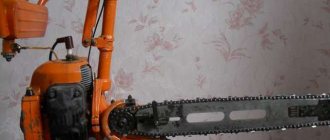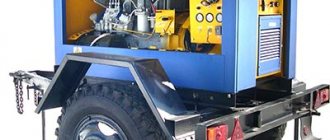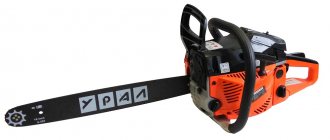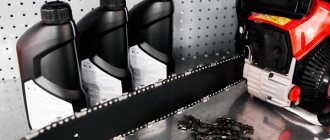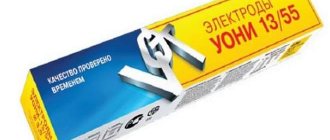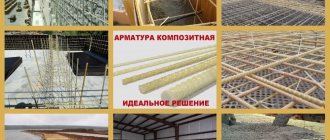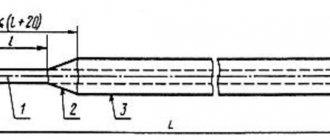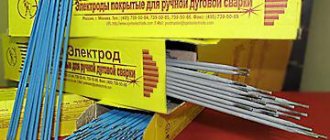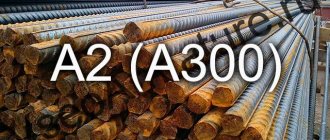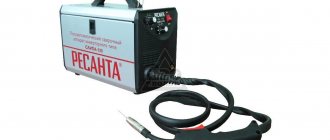Rotband plaster is a multifunctional gypsum mixture that contains polymer impurities that increase adhesion (adhesion). This technical characteristic allows the mixture to adhere to the base.
The main task is manual plastering with high quality, ceilings, walls from bases which are concrete, brick, polystyrene foam, cement. It is recommended to use in rooms where humidity is normalized. Gypsum absorbs moisture very well.
Works especially well on smooth concrete surfaces, vertical and horizontal. Knauf Rotband gypsum plaster has universal instructions on the bag. Therefore, there should be no problems. If it is torn or sealed, then read it on this page.
Rotband plaster what is it?
Rotband is a universal dry plaster mixture based on gypsum binder with light filler (perlite or sand is most often used) and polymer additives that provide increased adhesion. Rotband has been produced worldwide since 1962, in Russia since 1997.
It is standardly produced in paper bags of 30 kg, and also comes in small packaging of 5 and 10 kg.
This is a mixture for hand plastering indoors. A direct analogue for mechanized application is Knauf MP75 (Knauf MP75).
How to reduce consumption?
If the layer thickness is planned to be more than 1 cm, but you want to finish the wall with Rotband, then you can simply do a two-layer finish. Apply the first layer of plaster from a cement-sand mixture, and after it has completely dried (at least 30 days), cover the surface with a thin layer of gypsum plaster. This combination will make the surface of the walls strong and durable; in the future, any even heavy structures can be safely attached to dowels and not be afraid that the finishing layer will begin to crumble and crumble.
As an alternative to the classic solution of water and gypsum plaster, sand can be added in such an amount that its weight is comparable to Rotband as 1 to 1. Accordingly, the amount of water here will need to be doubled and the resulting ratio of ingredients will be 10 kg of Rotband, 10 kg sand and 12 liters of water.
A feature of such a solution will be the need to put more effort when working with the composition. The application process will be difficult to a significant extent, since obtaining a good, even surface, similar in quality to the surface where Rotband undiluted with sand is used, will require much more time and effort.
How long does it take for Rotband to dry?
Drying of plaster depends on many factors, but on average the drying time of a layer of 15-20mm at a temperature of 20C and air humidity of about 60% is approximately 7 days.
For quick drying, it is necessary to ensure good ventilation and absence of drafts in the room. Do not point the heat gun at the plastered surface, as this may lead to defects.
To speed up drying, you can use dehumidifiers that condense moisture from the surrounding air.
Working with the calculator
The calculator proposed for determining the consumption of rotband plaster per 1 m2 of wall takes into account the consumption rate given by the manufacturer.
The user needs to enter his data in the boxes:
- the length of the perimeter walls;
- wall height;
- the presence of windows and doors in the room;
- amount of mixture in one bag;
- average thickness of the plaster layer.
The calculator gives the result in kilograms for bases with a relatively flat surface. The calculator multiplies the resulting value by 1.15 (a coefficient that takes into account large deviations).
Rotband color
Rotband in Russia is produced at several factories. On each bag, after the date and time of production, a digital code of the manufacturer is indicated. Depending on the presence of various natural impurities in the raw material (natural gypsum), the color of the plaster may vary.
Letter designation of the manufacturing plant:
- A - Knauf Gips Krasnogorsk LLC, Moscow - gray mixture;
- B - Knauf Gips Kolpino LLC, St. Petersburg - gray mixture;
- C - Knauf Gips Kuban LLC, Krasnodar - light (white) mixture;
- D - Knauf Gips Baskunchak LLC, Astrakhan - light (white) mixture;
- E - Knauf Gips Chelyabinsk LLC, Chelyabinsk - light (white) mixture;
- F - Knauf Gips Baikal LLC, Irkutsk - gray mixture;
- G - Knauf Gips Chelyabinsk LLC, Samara - gray mixture;
- H - Zvenigovsky Construction Gypsum Plant LLC, rep. Mari El - gray mixture;
- I - Knauf Gips Novomoskovsk LLC, Tula - gray mixture.
Consumption rate of plaster per 1 m2 - table
| Plaster mixture | Approximate consumption, kg/m2 |
| plaster | 9 |
| cement | 17 |
| decorative | 8 |
Consumption of gypsum plaster Rotband Knauf | |
| Rotband Knauf, grain up to 1.2 mm, layer 10 mm | 8.5 |
Consumption of decorative plaster CERESIT bark beetle | |
| “Bark beetle” Ceresit CT-35, dry, grain 2.5 mm | 2 |
| “Bark beetle” Ceresit CT-35, dry, grain 3.5 mm | 3 |
| “Bark beetle” Ceresit CT-63, acrylic, grain 3.0 mm | 3.7 |
| “Bark beetle” Ceresit CT-64, acrylic, grain 1.5 mm | 2.0 |
| “Bark beetle” Ceresit CT-64, acrylic, grain 2 mm | 2.7 |
| “Bark beetle” Ceresit CT-75, silicone, grain 2 mm | 2.5 – 2.7 |
| “Bark beetle” Ceresit CT-73, silicate, grain 2 mm | 2.5 – 2.7 |
| “Bark beetle” Ceresit CT-73, silicate-silicone, grain 2 mm | 2.7 |
Consumption of Volma gypsum plaster | |
| VOLMA-Layer, layer 10 mm | 8 – 9 |
| VOLMA-Canvas, layer 10 mm | 9 – 10 |
| VOLMA Gypsum Active, layer 10 mm | 8 – 9 |
Volma cement plaster consumption | |
| VOLMA-Aqualayer, grain up to 1.25 mm, layer 10 mm | 11 – 12 |
| VOLMA-Aquaplast, grain up to 1.25 mm, layer 10 mm | 16 – 18 |
| VOLMA-Aquastart, grain up to 1.25 mm, layer 10 mm | 14 – 16 |
| VOLMA-Bark beetle, layer 10 mm | 3 – 4 |
Consumption of Yunis plaster | |
| Teplon Universal, layer 10 mm | 12 – 13 |
| Teplon Moisture-resistant, layer 10 mm | 12 – 13 |
| Teplon White, layer 5 mm | 4 – 4.5 |
| BARK BEAD-DECOR, grain up to 3 mm, layer 2 mm | 5 – 6.5 |
| BARK BEAD-DECOR, grain up to 2 mm, layer 2 mm | 2 – 4 |
Consumption of plaster Prospectors | |
| “Optimum”, “MIXTER”, layer 10 mm | 10 – 11 |
| “Gypsum”, “Gypsum White”, layer 10mm | 8 – 9 |
| “Cement”, layer 10 mm | 14 – 15 |
| BARK BEETLE, grain 2 mm, layer 1.5-2 mm | 2 – 2.5 |
| BARK BEETLE, grain 3 mm, layer 1.5-2 mm | 3.5 – 4 |
Consumption of Bergauf plaster | |
| BAU PUTZ GIPS, layer 10 mm | 11 – 13 |
| BAU PUTZ ZEMENT, layer 10 mm | 16 – 18 |
| EASY PLASTER, for beginners, layer 10 mm | 12 – 13 |
| PRIMA PUTZ GIPS, layer 10 mm | 9 – 12 |
| EASY BAND, layer 10 mm | 8 – 9 |
Tips and tricks
Professional advice for beginners will help you get the job done efficiently using Rotband plaster:
- It is always worth purchasing material with a reserve;
- do not dilute a lot of solution at once;
- add water to the dry mixture, and not vice versa, and do not pour in the entire recommended volume at once;
- work in a dry room, observing the temperature range from +5 to +25;
- take into account in advance whether the plaster will perform a decorative function and apply relief already during the plastering process;
- use two layers of high-quality primer;
- before applying plaster, remove all metal elements from the wall or paint it with 2 layers of white enamel;
- Do not try to speed up the drying process with heat fans and heaters - the moisture will evaporate too quickly and the surface may crack.
You can learn how to level the ceiling and walls with your own hands from the video below.
How much does gypsum putty cost?
The mixture is packaged in three-layer paper packages, their price depends on the amount of material, as follows:
- 5 kg of the mixture can be purchased for 120 rubles;
- 10 kg – 200 rub.;
- 25 kg – 320 rubles;
- 30 kg costs 420 rubles.
As you can see, the packaging of the material is more than convenient. It is designed for the use of plaster for rooms with different volumes of work.
Rotband Knauf is a recognized favorite among similar plasters. Its cost is higher than that of other gypsum mixtures, but it is fully justified by the quality of the surface after its processing, the ease of working with it, and the speed of hardening. This, one might say, is a luxury material that has no equal today. When purchasing it, you should check the expiration date and the presence of a holographic sticker on the package; this way you can protect yourself from counterfeits and working with low-quality material. You may also find useful information about which plaster is better, gypsum or cement. Also read the difference between gypsum plaster and putty. Follow the link to find out which gypsum plaster is better, Knauf or Volma.
What is gypsum plaster mass from
German specialists, traditionally producing high-quality dry plaster, still keep the main components and method of producing the gypsum mass a secret. By law, they are only required to confirm the sanitary safety and environmental friendliness of gypsum plaster, but have the right not to disclose production technology, which they regularly do. As long as gypsum rotband is used, questions arise about its composition.
It is only known that the dry plaster composition of rotband includes:
- Gypsum mass with additives that improve water adhesion and prevent shrinkage:
- Plasticizers that increase the fluidity and hardness of the gypsum surface after setting;
- Dust-like inert filler based on silicon oxide with a fine-crystalline structure.
To prepare the finished Knauf Rotband gypsum mixture with your own hands, you just need to add clean water, exactly as much as the instructions require, and mix the mixture with a mixing attachment. Per kilogram of dry gypsum rotband powder consumes 0.6 liters of water. After activation and mixing with a mixer, the rotband gypsum mass remains in working condition for another 40 minutes, the plaster dries quite quickly. During this time, it is necessary to complete most of the finishing operations. How long exactly the Knauf rotband material will set depends on the temperature, air humidity and the presence of a draft.
The advantages of the universal plaster mass “Knauf” rotband over cement plasters can be formulated in four points:
- High quality surface, absence of deformation and cracking of the gypsum mass, subject to the rules for preparing the solution specified in the instructions;
- Almost halved consumption of gypsum plaster compared to sand-cement compositions;
- The versatility of Knauf rotbands allows you to use the same mass both as plaster and putty.
- Environmental friendliness and safety. The use of gypsum binders, according to the developers, makes the room more comfortable for human occupancy. In addition, gypsum material has better thermal insulation, dries faster and is resistant to open flame.
They produce dry gypsum mixture Rotband "Knauf" in soft packaging weighing 30 kg. The name gypsum universal plaster is often confusing when, upon opening the bag, a person sees in front of him a gray mass resembling cement. In fact, the dry mixture of Knauf rotbands has long been produced not only in Germany, but also in a number of CIS countries, including the Russian Federation. Therefore, the dry mass can be gray, white or pink. As the plaster dries on the surface of the walls, it gradually becomes lighter and becomes almost white.
There are a lot of fake Knauf rotband plasters sold on the market, so you can easily get into trouble, not knowing how to distinguish a fake from the original.
Advice! When packaging ready-made mixtures on the line, the date and exact time of sealing the bag are applied to the packaging by a mechanical automatic machine. If on a pallet with packaged plaster there are packs with the same packaging time, then most likely you are looking at a fake “Knauf” rotband.
Ready-made mixtures can be stored in packaged form for up to six months; dry plaster cannot be stored in an open container for more than a week. Instructions and storage rules are always given on the packaging of gypsum plaster.
Installation of corners and beacons
Installation of beacons on the wall In order to set the alignment plane, perforated profile beacons are installed on the wall, and perforated profile corners are installed on the outer corners.
The distance between the beacons should be slightly less than the rule with which you will level the surface. If the rule is 150 cm, then the optimal distance between the beacons is 130 cm; if the rule is 200 cm, then the distance is 180 cm. The corners and beacons are installed on the same rotband solution. To do this, mix a solution in a bucket specifically for installing beacons. First of all, the outer beacons are installed, or a beacon on one side and a corner on the other side. Using a spatula, apply heaps of mortar to the wall every 30 cm and fit the profile to them. Level it by adjusting the level.
After installing the outer beacons, set up the intermediate ones using a thread stretched at the top and bottom of the wall between the outer beacons. When installing intermediate elements, they can be aligned by aligning the edges along the thread and pressing the plane with a rule or level. Wait a few hours for the beacons to harden and you can start plastering.
Preparing the base
The old decorative coating is cleaned from the walls, dust and dirt are removed. Do not apply plaster to form release agent. They will definitely get rid of it. If you leave the projections without removing them before starting work, the consumption of KNAUF-Rotband plaster per 1 m2, like any other mixture, will increase significantly.
The presence of metal elements will not interfere with plastering and will not increase the amount of mixture applied. The main thing is to treat them with a special primer to avoid the corrosive processes to which the metal is susceptible. When the surface of the walls is completely cleaned, you can proceed to calculations.
Application area
If you decide to purchase Rotband, the instructions will help you understand where this material can be used. Most often used indoors where humidity is normal. Although it is possible to use this material in the kitchen and bathroom. Ceilings and walls built from brick, fiberboard, concrete and expanded polystyrene are treated with the solution.
It is advisable to use the material for leveling smooth surfaces, although it can be used on porous substrates that should be pre-primed. Most often, residential premises are renovated with this plaster.
What is the mixture consumption per meter?
The instructions located on each bag indicate the proportions for preparing the solution. Following the mixing technology, builders must obtain from 30 kg of dry substance so much composition that it is enough for 3.5-4 m2 of surface when applying a layer of 10 mm. With a smaller thickness, the plastering area increases, and with a larger thickness, it decreases.
You can calculate the consumption yourself. If there are differences on the plane, then you first need to find the average thickness. Let's say the deviation from the vertical is 0.7 mm, 1.5 cm and 2 cm in three positions. Then the average value will be: (7+15+20): 3=14 mm. For 1 m2 you will need 8.5 x 1.4 = 11.9 (kg). For a plane of 20 m2 it will take 11.9x20=238 (kg) or almost 8 bags of 30 kg each.
Preparation and application
According to the characteristics of Rotband, it is suitable for starting and finishing finishing. The contents of a bag weighing 30 kg are filled with 20 liters of water (t=5-30°C). Mixing is carried out (with a mixer, a drill with an attachment, or by hand). Next, the composition should stand for 5 minutes, after which short-term stirring is performed again. Re-adding dry matter or liquid to the mortar mixture is not permitted.
The technology involves applying a one-time layer in the range of 5-50 mm on walls and 5-15 on ceilings. But reviews from craftsmen indicate that all the properties of Rotband are preserved in layers up to 25 mm inclusive. A thickness of 30-50 mm can cause cracks. To prevent such situations, it is imperative to use special Knauf primers.
Plastering is carried out within 20-25 minutes after preparing the solution. If in the future it is planned to lay a second layer, then the unhardened first one must be “combed” with a special comb. You can repeat the treatment only after a day. Leveling the surface with a metal spatula is carried out approximately an hour after applying Rotband, when it has already “set” a little.
| Weight of packing | Retail price, rubles | Wholesale cost, rubles |
| 30 kg | 360 — 425 | 285 — 300 |
| 10 kg | 228 — 245 | 176 — 205 |
| 5 kg | 114 — 125 | 99 — 115 |
Reviews
“I worked with Rotband for the first time. I liked the excellent plasticity of the mixture. The solution was easy to apply to the concrete wall. Since the layer was thin, it dried quickly. Within 24 hours I was able to start laying tiles in the kitchen.”
Slava, Moscow region.
“I bought a standard Knauf Rotband, 30 kg in a bag, opened it and was surprised at the pink color. It turned out that this grain was perfect for a leveling solution. The 2 cm layer did not “creep”. Now I know that it’s better to use pink powder for leveling, and white or gray for “delicate work.”
Vlad, Perm.
“For plaster in the bathroom, only Rotband was recommended. I was confused by its high price compared to Volma and Prospectors. But I bought it because I didn’t want to experiment. Now I’m very glad that I listened to the consultant. If you need results, we don’t skimp.”
Oleg, Moscow.
“Rotband is one of the best blends. The undoubted advantages are plasticity, easy installation, smooth “breathing” surface. But the products are expensive, repairs cost a pretty penny. To save a little, you can mix it with MP75 (also Knauf, but for machine application).”
Igor, Khabarovsk.
“Rotband is an excellent solution for amateurs in repairs. I needed to seal the cracks in the wall and I did it, although I had never held a spatula in my hands before. The detailed instructions in the pictures on the bag were very helpful. The plaster was mixed well, and then the container, tools and floor were quickly washed.”
Victoria, Ufa.
How to properly level the surface?
Gypsum plaster can become a capricious finishing material if you do not know the rules for working with it. In order not to lose your money and time, you need to know how to handle gypsum mortar.
Application
Let's consider a number of rules, following which the work will be completed on time, and pieces of plaster will not fall off over time:
- The solution will stick well to the base if its consistency is similar to thick sour cream.
- The mixture is “thrown” onto the base or pressed well. This allows for greater adhesion to the surface.
- The solution is scattered in a checkerboard pattern. The distance between portions should not exceed 15 cm.
- The maximum layer that can be applied at one time is 5 cm.
These rules are not difficult to learn. After leveling one wall, the novice master carries out these instructions automatically.
Leveling the base, grouting and smoothing
- The composition is leveled over the base using a spatula, making careful movements from bottom to top.
- Then the solution is leveled using an H-shaped rule.
- After about 20 minutes, when the solution has cooled a little, they begin to level the base using a trapezoidal rule. It helps to get rid of excess mixture, and it also rubs over the grooves that appear.
- After a pause (15 minutes), the generously moistened surface is rubbed with a sponge grater, making circular movements.
- When the wall takes on a matte tint, begin smoothing with a trowel or wide spatula.
The finished coating is suitable for further finishing or wallpapering.
Rotband plaster is a high-quality composition from a German manufacturer with high quality characteristics. It is suitable for leveling walls, making them suitable for finishing - painting, wallpapering or laying tiles.
Conclusion
Having detailed instructions at hand, knowing the technical characteristics and features of the product, almost any beginner will be able to apply plaster. Rotband "Knauf" is a modern and popular way to decorate your home. It greatly simplifies the work and makes it enjoyable. You can buy Rotband plaster at almost any construction store. Its average cost for 30 kg is 355 rubles. You can even order online, so the price will be even lower.
data-matched-content-ui-type=”image_stacked” data-matched-content-rows-num=”2″ data-matched-content-columns-num=”3″ data-ad-format=”autorelaxed”>
About gypsum and its range of applications
Gypsum has a wide range of uses due to its chemical base of calcium sulfate dihydrate.
It has been known as a building material since ancient times. An improved process scheme for processing raw materials (gypsum stone) is currently in use.
Sedimentary rock has several types of structure:
- crystalline;
- fibrous;
- grainy;
- sandy.
The work requires attention.
The color of gypsum can have warm honey shades, as well as white and grayish colors.
In order to transform the mined rock into the initial component of building compositions, it is necessary to carry it through several operations:
- crushing using hammer devices;
- the operation of grinding gypsum crushed stone into powder is combined with the process of its heat treatment (drying);
- at the stage of its firing in the temperature range of 130–160 degrees Celsius. Within 1–3 hours, a semi-aqueous powder is obtained. What specific time interval to choose is up to the technologists to decide.
Gypsum is used not only in the form of a calcined mineral. The raw mineral is used by sculptors to create sculptures and crafts, in the production of Portland cement, and in agriculture as a fertilizer.
Before work
The scope of application of the mineral, which has undergone special processing, is enormous: it is used in construction, architecture, medicine, in the production of cement and paper, and in the manufacture of stucco. Burnt gypsum has proven itself especially well as a material for the production of various types of gypsum plasters.
